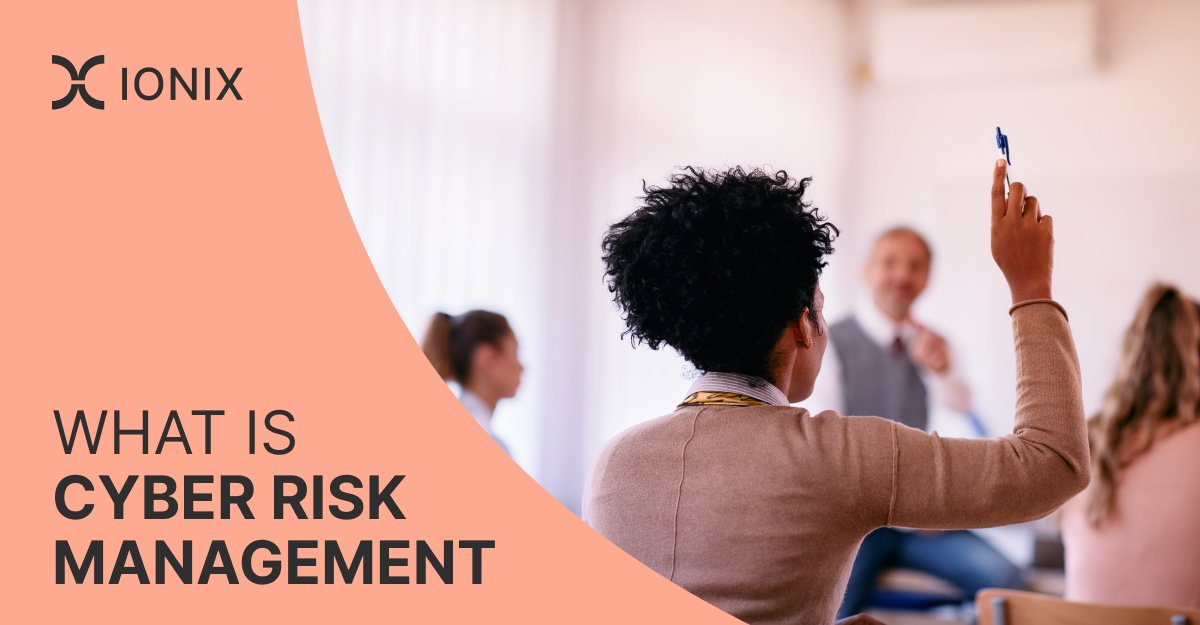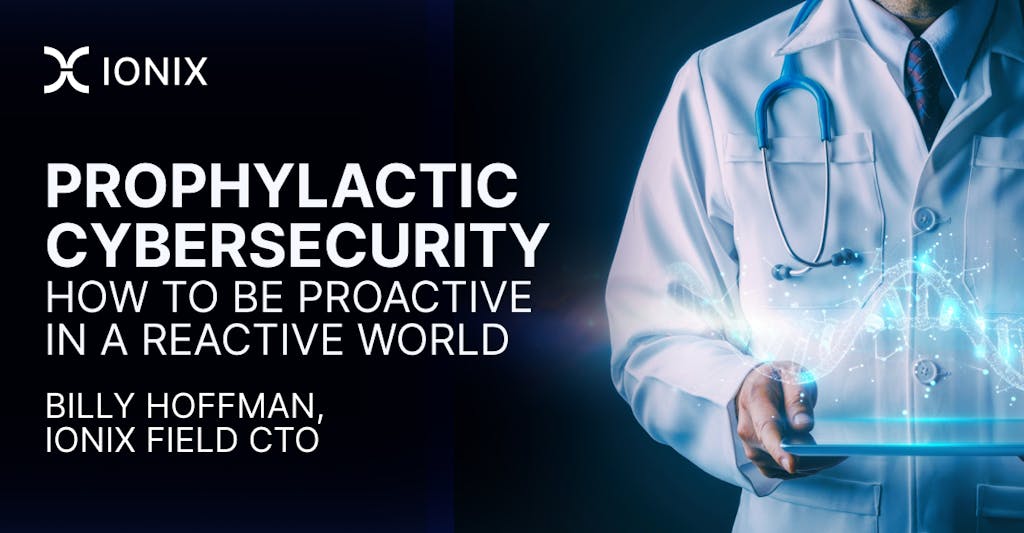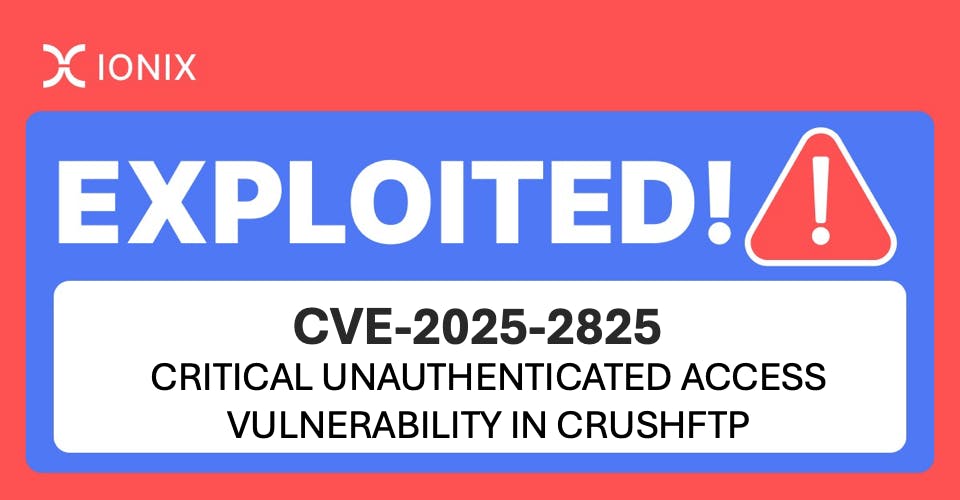What is Cybersecurity Risk Management?

In the constantly evolving world of digital technology, cybersecurity risk management is a critical pillar in any organization. By effectively managing cybersecurity risk, you reduce incidents and the costs resulting from data breaches.
However, cybersecurity risk management involves many different elements. It’s helpful to have an understanding of these aspects in order to leverage cybersecurity risk management to its fullest potential.
In this article:
- What is Cybersecurity Risk Management?
- Broader Impact of Cybersecurity Risk Management
- Cybersecurity Risk Management Tools: Enhancing Security Posture
- Cybersecurity Risk Management Strategy
- How IONIX Can Help
- Frequently Asked Questions
In this article
What is Cybersecurity Risk Management?
Cybersecurity risk management is an ongoing process designed to protect a company’s digital landscape from threats. This process includes identifying, assessing and reducing risks associated with online operations and technology-based assets. This process involves a series of critical steps:
- Identifying Digital Assets: The first step is a comprehensive inventory of both tangible and intangible assets that have value to the organization. This includes everything from customer data, proprietary algorithms, and intellectual property, to critical software applications and network infrastructure. Understanding what is valuable and vulnerable is crucial for setting priorities in risk management.
- Reviewing and Maintaining Existing Security Measures: Cyber threats are not static, and neither should the defenses against them. This step involves continuously evaluating and updating security measures to match the dynamic nature of cyber threats. This includes patch management, updating antivirus software, and revising access controls and encryption protocols to ensure they are robust against current threats.
- Performing Risk Assessments: A proactive approach is key in cybersecurity. This involves conducting thorough assessments to identify potential risks. These assessments should consider not just technological vulnerabilities but also human factors, supply chain dependencies, and emerging threats in the cybersecurity landscape. The goal is to understand how these risks could impact the organization’s operations and reputation.
- Implementing Solutions to Known Risks: Once risks are identified, the next step is to develop and execute strategies to mitigate them. This includes deploying technical solutions like firewalls and intrusion detection systems, as well as implementing organizational policies like regular security training for employees and establishing a robust incident response plan.
In essence, cybersecurity risk management is about creating a resilient digital environment where risks are continuously identified, assessed, and mitigated, ensuring the organization’s assets remain secure and its operations uninterrupted. This is not a one-time project, but an integral part of the organization’s culture and operational strategy.
Broader Impact of Cybersecurity Risk Management
Cybersecurity risk management extends beyond just securing digital assets; it is a vital component in the overall health and sustainability of any organization. Its significance is multifaceted:
- Reducing Risk to the Organization and Its Stakeholders: In today’s interconnected world, an organization’s cybersecurity posture directly influences the safety of its customers and users. By systematically addressing vulnerabilities, organizations not only protect their own infrastructure but also safeguard the personal and financial information of their clients. This proactive approach helps in preventing data breaches, which could have far-reaching consequences for all involved parties.
- Maintaining Regulatory Compliance: Cybersecurity is no longer just an IT issue; it’s a legal and compliance necessity. For instance, companies in the healthcare sector must adhere to HIPAA regulations, which mandate the protection of patient data. Non-compliance can result in significant legal penalties and loss of reputation. Similarly, industries like finance, retail, and services have their own set of regulations. Adhering to these standards is crucial not just for legal compliance but also for maintaining industry credibility.
- Reducing Costs: the financial impact of cyber incidents can be staggering. According to IBM’s 2023 report, the average cost of a data breach in 2023 was $4.45 million. This is a figure that encompasses not just the immediate response costs but also long-term repercussions such as customer compensation, legal fees, and increased insurance premiums. By investing in robust cybersecurity measures, organizations can avoid these incredible expenses.
- Maintaining Business Reputation and Trust: In an era where brand reputation is closely tied to digital security, a strong cybersecurity stance is a key differentiator. Companies known for their rigorous cybersecurity practices earn greater trust from customers, partners, and stakeholders. This trust is invaluable; it not only enhances customer loyalty but also attracts business partnerships and opportunities.
Ultimately, a cybersecurity risk management process is a strategic business imperative that goes beyond technical measures. It is about building an organization that can adapt to rapidly changing threats, comply with regulatory requirements, minimize financial liabilities, and foster a culture of trust and reliability.
Cybersecurity Risk Management Tools: Enhancing Security Posture
In cybersecurity risk management, the utilization of specialized tools plays a crucial role in fortifying an organization’s defenses against cyber threats. These tools not only streamline the process of identifying and mitigating risks but also ensure that security measures are both effective and compliant with regulatory standards. Below are some key categories of cybersecurity risk management tools:
- Risk Assessment Tools: These tools are essential for evaluating the security posture of an organization. They help in identifying vulnerabilities in systems and processes by conducting automated scans and audits. By generating detailed risk reports, these tools provide insights into potential weaknesses and recommend measures to mitigate them.
- Compliance Management Tools: With the growing number of regulatory requirements, compliance management tools are vital. They automate the tracking and reporting of compliance with standards like GDPR, HIPAA, or PCI-DSS. These tools ensure that an organization’s cybersecurity practices meet the required legal and industry standards, thus avoiding potential fines and legal issues.
- Threat Intelligence Platforms: These platforms gather and analyze data about emerging threats from various sources. By providing real-time alerts and insights into the latest cyber threats, these tools enable organizations to proactively adjust their security measures and respond more effectively to potential attacks.
- Incident Response Tools: In the event of a security breach, quick and efficient response is crucial. Incident response tools provide a framework for managing the aftermath of a breach, from initial detection to containment, eradication, and recovery. They help in coordinating response efforts and minimizing the impact of security incidents.
- Security Information and Event Management (SIEM) Systems: SIEM systems are integral for real-time analysis of security alerts generated by applications and network hardware. They aggregate and analyze log data, detect anomalies, and alert security teams about potential security incidents.
- Encryption Tools: Protecting sensitive data is a core aspect of cybersecurity. Encryption tools help in securing data both at rest and in transit, ensuring that even if data is intercepted or breached, it remains unreadable and secure.
- Vulnerability Management Software: These tools continuously scan for vulnerabilities in an organization’s network and systems. They prioritize vulnerabilities based on the level of threat they pose and assist in planning remediation efforts.
- Network Security Tools: These include firewalls, antivirus software, and intrusion detection systems. They form the first line of defense against external threats and are essential for maintaining the integrity and availability of network resources.
- Endpoint Protection Platforms: With the rise of remote working, securing endpoints – like laptops, mobile devices, and desktops – has become more important. These platforms provide centralized management of security policies and protect against malware, ransomware, and other cyber threats.
- Cloud Security Tools: As organizations increasingly move to cloud environments, securing these platforms is critical. Cloud security tools offer functionalities like access control, data encryption, and threat detection specific to cloud services.
Creating an effective cybersecurity risk management platform is a multi-faceted endeavor, and these tools play a pivotal role in creating a robust security framework. By leveraging the right combination of these tools, organizations can significantly enhance their ability to detect, prevent, and respond to cyber threats, thereby safeguarding their digital assets and maintaining business continuity.
Cybersecurity Risk Management Strategy
Any cybersecurity risk management framework involves 3 steps: risk identification, analysis, and treatment. Below, we provide a risk management strategy that goes through each step.
Risk Identification
To identify your cybersecurity risks, you need to form an asset inventory. Your attack surface is what malicious actors interact with: it should be a priority in your risk management strategy. For this step, we recommended using an external attack surface management service like IONIX’s Attack Surface Discovery.
When considering cybersecurity risks, the following factors are typically at the forefront:
- Unauthorized Access: This includes any breach where someone gains access to your systems or data without permission.
- Insider Threats: Risks originating from within the organization, whether intentional or accidental.
- Financial Loss: Potential monetary losses resulting from cyber-attacks, including theft, fraud, or business disruption.
- Regulatory Compliance: The risk of failing to meet legal and industry-specific data protection standards.
However, these factors are just the tip of the iceberg. To deepen your understanding, it’s essential to ask more probing questions:
- Asset Classification: What constitutes an asset in your organization? This could range from physical devices to intellectual property and customer data.
- Potential Attack Methods: How might a malicious actor compromise the confidentiality, integrity, or availability of these assets? Understanding the tactics, techniques, and procedures (TTPs) of potential attackers is key.
- Vulnerabilities: What weaknesses could be exploited in your assets? This involves recognizing both technical flaws and organizational vulnerabilities.
- Identifying Threat Actors: Who is likely to target your organization? Different sectors often face different types of adversaries, from cybercriminals to state-sponsored hackers.
In addition to these considerations, continuous threat monitoring is vital for detecting risks and identifying malicious activity in real-time. Tools like IONIX’s Risk Assessment can be invaluable here, offering ongoing surveillance of your attack surface and alerting you to emerging threats and vulnerabilities. Remember, risk identification is not a one-time task but a continuous process that evolves as new threats emerge and your organization grows and changes.
Risk Analysis
Risk analysis is the process of evaluating the severity and potential consequences of each identified risk. These consequences can span financial losses, reputational damage, legal ramifications, or regulatory non-compliance. For instance, a breach in a medical database not only incurs hefty HIPAA violation fines but can also affect reputation, legal standing, and regulatory compliance, encompassing all four consequence types. The severity of risks often hinges on the specific context of your business. For example, in an e-commerce setup, the continuous availability of your website is critical.
To quantify risk effectively, frameworks like the Factor Analysis of Information Risk (FAIR) are instrumental. They provide a structured approach for understanding and analyzing information risk. The FAIR Institute’s report “How Material is That Hack?” is an excellent resource for understanding the consequences of major data breaches, offering a quantified perspective on their impact.
For organizations seeking a tailored solution, tools like IONIX’s Risk Prioritization system can be highly beneficial. This system prioritizes risks based on their relevance to your specific business context, ensuring that the most critical risks are addressed first. It’s a strategic approach to risk management, aligning cybersecurity efforts with business objectives and risk tolerance levels.
By conducting a thorough risk analysis, organizations can not only identify but also understand the depth and breadth of each risk, enabling them to allocate resources more effectively and strengthen their cybersecurity posture against the most pertinent threats.
Risk Treatment
Understanding your cybersecurity risks is just the first step. Treating these risks effectively is where the real challenge lies. This typically involves a combination of well-defined security policies and various security controls. Here’s a breakdown of key strategies and tools that can aid in risk treatment:
- Endpoint Management: Effective management of network endpoints is essential to enforce security policies. Tools like Microsoft Intune offer robust solutions for monitoring and managing devices connected to your network, ensuring they adhere to your security standards.
- Patch Management: Keeping software up-to-date is crucial in closing security gaps. Vulnerabilities often reside in outdated software. Patch management tools, like Patch My PC, automate the process of updating software, thus mitigating this risk.
- Vulnerability Assessment: Regularly conducting vulnerability assessments helps identify weak spots in your systems. By uncovering and addressing these vulnerabilities, you can significantly reduce your exposure to cyber threats.
- Penetration Testing (Pentest): Penetration testing involves simulating cyber-attacks on your systems to identify and exploit weaknesses, offering insights into how well your defenses can withstand real-world attacks.
- Network Segmentation: By dividing your network into smaller, isolated segments, you make it more difficult for attackers to move laterally across your network and access sensitive assets.
- Identity and Access Management (IAM): Implementing IAM solutions, like Okta, helps in controlling who has access to what within your organization, thereby enhancing security and minimizing the risk of unauthorized access.
- Anti-Phishing Measures: Training employees to recognize phishing and social engineering attacks is crucial. Complement this with technical measures like scanning emails for phishing attempts, password managers, and multi-factor authentication (preferably hardware-based) to bolster defenses.
- Incident Planning: Having a robust Incident Response Plan is vital for quickly detecting and recovering from security incidents, thereby minimizing the impact of attacks.
For a more integrated approach, solutions like IONIX’s Risk Remediation can offer comprehensive protection against risks. These systems can automate much of the mitigation process, streamlining your cybersecurity efforts and ensuring consistent application of your security policies.
Incorporating these elements into your cybersecurity strategy can significantly enhance your organization’s ability to manage and mitigate cyber risks, ensuring a more secure and resilient digital environment.
How IONIX Can Help
While navigating the intricate paths of a cybersecurity risk management plan may seem intimidating, partnering with IONIX can simplify the process. IONIX is dedicated to safeguarding both the attack surface and digital supply chain, offering a complete solution for cybersecurity risk management, from discovery to prioritization and remediation.
Book a demo today to learn how IONIX can help your organization improve cybersecurity risk management and improve your company’s security posture.
Frequently Asked Questions
What are the common cybersecurity threats that businesses face?
From ransomware attacks to phishing scams, businesses must remain vigilant against a plethora of cybersecurity threats that are constantly evolving. Some of the most common cybersecurity threats businesses face include:
- Phishing attacks
- Ransomware
- Malware
- Denial of Service (DoS) attacks
- Man-in-the-Middle attacks
- SQL injection
- Cross-site scripting (XSS)
- Unauthorized access
- Insider threats
How can organizations identify and assess their cybersecurity risks?
Regular vulnerability assessments, penetration testing, and threat intelligence are essential processes for identifying and assessing cybersecurity risk.
Organizations can stay one step ahead of potential risks by leveraging a comprehensive attack surface management solution like IONIX, which offers a range of cybersecurity solutions including:
How can companies develop an effective incident response plan?
An effective response plan involves understanding potential threats, having clear communication channels, and a recovery strategy to restore compromised systems swiftly.
An effective incident response plan includes:
- Preparation: Understand and identify potential threats, ensuring the necessary tools, processes, and teams are in place.
- Identification: Detect and acknowledge the incident.
- Containment: Isolate the affected systems to prevent further damage. This can be short-term (done immediately) and long-term (done after initial analysis).
- Remediation: Find the root cause of the incident and completely remove the threat from the environment.
- Recovery: Restore and validate system functionality for business operations to resume. Monitor for any signs of weaknesses that could be exploited again.
- Lessons learned: After handling the incident, conduct a retrospective of the incident. Document findings, determine how the incident occurred, what was done to resolve it, and how to prevent similar incidents in the future.
- Effective communication: Ensure clear lines of communication are established for both internal stakeholders and, if necessary, external entities like the media, customers, or regulators.






